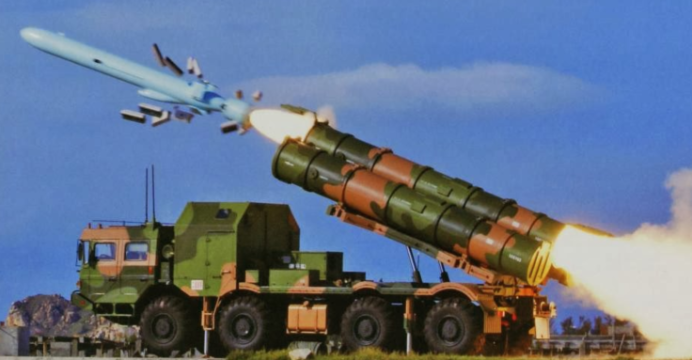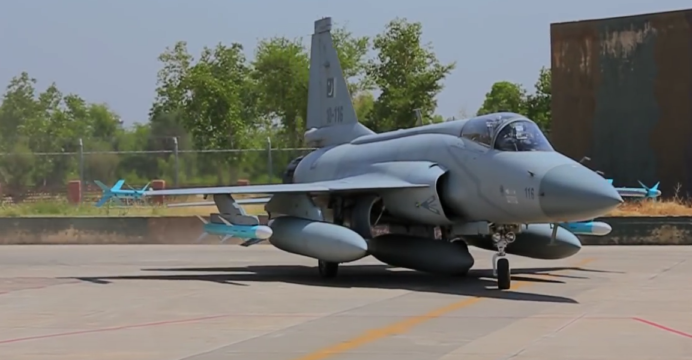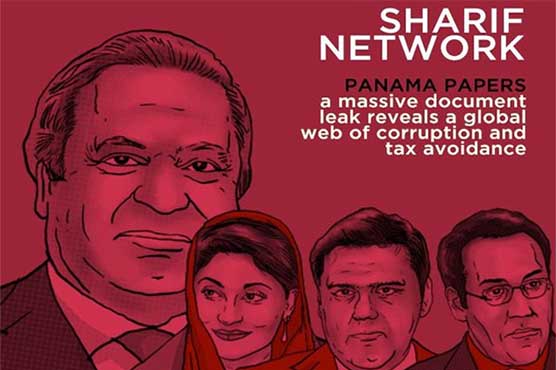
A Pakistani soldier captured these five Indian soldiers single-handedly at Wagah.
Unity Won us the 1965 War with India
R Umaima Ahmed
Within a short period of 18 years of its existence Pakistan came to fight a full fledged war with India. Prior to this there had been various skirmishes between the two countries.The Indian Commander in Chief had boasted that he will have his drinks in lawns of the Lahore Gymkhana at 10 am on 6th September but he had did not have luck on his side and the Indian soldiers fearing of being encircled and trapped got on their nerves and they retreated.On 6th September 1965 afternoon Pakistan’s President Field Marshal Ayub Khan spoke to the nation on Pakistan Radio and said, “Mere Aziz Humwatno, Dushman nai janta usne kis kaum ko lalkara hia (The enemy does not know whom it has challenged as a nation).” While speaking to people who had heard that speech say it was obvious that no one was afraid that the war had started. Instead everyone was jubilant and wanted to take part in it as much as they could. The army conveys on the move were stopped by people who brought food for them, ladies gave them their gold ornaments. The next day people witnessed the famous aerial dog fight over Lahore which was not only praised by the public but people abroad too. The Nation interviewed three retired army men who took part in the war Brig Rauf Ahmed Khan, Lt Col Syed Mukhtar Hussain, another officer who wanted to remain anonymous and an Admiral Tasneem Ahmed of the Pakistan Navy. Following are excerpts of the interview: Vice Admiral Ahmed Tasneem was commissioned in Royal Australian Navy 1.1.57 after initial training in UK. “Then I was posted as ADC to FM Ayub khan. This is the time when Ayub Khan took the famous visit to the US and persuaded Kennedy to give submarine to Pakistan Navy. I asked him to relieve me so I could join the submarine force. He agreed and I was part of the crew that went to US for training and brought back PNS Ghazi for induction in the PN through Suez Canal. Later Ghazi joined the fleet in 1965 and played a decisive role with me as 2nd in command. “We patrolled around Bombay to test Indian defenses for 30 days then came back, we sailed again on 1st and the war started on the 6th. It was obvious since the incidents in May and June at Raan of Kutch and Kashmir and some across border activity. Our main achievements were: 1. We had a submarine no other country had in the region which was a force multiplier and it weighed heavily in our favour. In fact the Indian Navy did not come out of harbor due to the Ghazi threat. 2. Navy was very well trained under the CINC Admiral AR Khan. The nation was united and spirit was high. Forces fight with nation’s support. Indians did not want to lose their ships to Ghazi. Even Vikrant the aircraft carrier did not come out. The operation was planned for 7th and 8th September night. Seven ships went to 5 miles off dwarka and each lunched 50 rounds, it had three effects1, blocked the IN port2, Radar knocked out which reduced the air effort3, PN morale raisedHe explained how the Navy reacted to President Ayub Khan’s speech. “Launching an attack is declaration of war. We were in enemy waters when we heard of the attack on Lahore, and heard the speech of Ayub Khan. The speech raised the morale of the sailors and they were charged with the spirit to defend the motherland. The nation’s unity was a factor, and coordination between the three forces was a decisive factor.“Ghazi’s antenna seal leaked so we had to return for mainland on 12th or 13th September. So to hide the fact that Ghazi was in dock for repairs, we were put in a floating dock and the water was not pumped out so we could be hidden. However we went in at high tide and when the tide turned the submarine tilted I had gone home to take a bath and I got a call and I ran back to port to save the sub. So that was an incident in which we almost lost the sub in dock rather than in battle.“In 1965 Pakistan was one dimensional force barring one submarine, today we are a four dimensional arm, sub, surface, air and marine arm. Money is always a concern, and today the navy is deployed in many areas, including anti-terrorism and anti-piracy duties on high seas, for the last two years. So we need to keep it afloat; ships are expensive but politics and such often plays a role in this. We need more fuel we have load shedding we need fuel for power generation, sea routes carry our exports, so if a port is blocked we run into myriad problems of movement.Brig Rauf Ahmed Khan joined the Pakistan Military Academy Kakul in May 1960 and after two and a half years of training he got commission in 9 FF in October 1962. The battalion was located in Malakand fort then, and later moved to Kharian where it was garrisoned when the war started. “On 6 September we got the orders to reach Pasrur, we left Kharian at 2:30pm. I was leading the convey from Kharian in my jeep, when reached near the Wazirabad bridge I saw there were some 15 to 20 people standing there, including women. I told them to clear the road as the war has started and the enemy may carry out an air attack. They were there with four big buckets of milk, which they had brought for us. We could not carry all of it, and it would have been very impolite if we refused them outrightly. So we all took a few sips of it, thanked them and left with their well wishes and prayers. This was the passion of the public and support for the army on that day.“When I was in the Battalion headquarter at about 3 pm we got a message that Lt Qudus Mirza the Artillery observer needed to be evacuated as he was injured in the firing. He was not only my batch mate but part of my platoon so I told my CO that I will take the task to evacuate him. I went with my driver in a jeep.“I learnt that Lt Qudus Mirza was attacking the enemy tanks with anti-tank recoilless rifle. His Hawaldar had destroyed three enemy tanks, but when the dust rose it was visible to the enemy where they were being attacked from. The enemy’s fourth tank fired at the position and the Anti-tank rifle crew embraced shahadat, and Lt Qudus was a injured when a shrapnel hit his leg. He was laid in a trench, but as he was in great pain when I reached, we made sure he should be taken out with care and put into the jeep. I briefed his hawaldar to take Lt Qudus to the nearest first aid camp as soon as possible. As soon as Lt Qudus Mirza left we heard an attack from Phillora side, we had expected that the jeep would have been attacked. But years later when I met Lt Qudus he said if I had not told them to speed away from that area he may not have lived.He speaks of the time that was just before 6 September. “There were skirmishes in the area of the Raan of Kuch starting in April-May. Operation Gibraltar got underway in August and Operation Grandslam in September. We definitely were witnessing things leading to war. The Army was mentally and physically prepared and it was beyond understanding how the Foreign Minister Zulfikar Ali Bhutto had thought that in reply to these operations how the enemy would not cross the international borders. It was a faulty analysis by him. We have been very unfortunate because we had secured a large amount of area in Operation Grand Slam we had reached Jaurian and Indian army was on the run, but we paid a heavy price when General Akhtar Malik was removed and Gen Yahya was given the Command against all norms and protocol and against teachings of battle. Gen Yahya took 36 hrs to assess and re-plan the operation and that gave time to India to regain its position and hit back. This one decision was a great loss. However by that time the PAF had gained superiority and that helped is stopping the counter attack by the Indians.”Col Mukhtar was commissioned in July 53, posted to 9 FF in Kharian Cantt in the unit. He spoke about the start of war said; Army was already deployed in field location and expected an Indian attack sometime. “We were at Kharian, and moved to battle location on 6th September. When we moved out on 6 sept to Pasrur our battle location, middle of night 6/7 September we got information that there was threat of Indian para-drop at Eimenabad near Gujranwala to cut the Lahore-Pindi GT road, we moved at night and early morning of 7th four Indian aircraft flew over us to hit Sargodha, were shot down by MM Alam and they did not return. We then moved back to Chowinda sector. On the evening 10-11, around 8 pm we got orders to move to relieve 24 Brigade around Phillora cross, and the battalion occupied the area of the brigade, that is a company to occupy a battalion position each. They moved to Chowinda while we blocked Phillora. The morning saw Indian tank assault and one company was over run and an antitank crew hit tanks and slowed the assault, one company on area 40 r was untouched. We came under heavy artillery and tank attacks but we stood our ground and gave 24 Brigade the needed 24 hours to defend the area.“We started pulled out on orders from HQ on 11th and were told that Phillora cross was secure. However, when we got there it was under Indian occupation, and we were hit again. However, our troops shouted at the Indian soldiers repeating Ayub’s “tum nae kis qaum ko larkara hai.” We managed to fight and blunt the Indian assault, and captured an Indian officer also. I put him in a jeep and told Captain Mehdi to take him to the HQ but in the cross fire later the driver and Indian officer were killed. We extricated ourselves in small groups, I was the last man to come out of there and there was a Sherman tank there I went round it and I saw that a rocket launcher person Naik Dilbagh and said come lets fire at this tank, but he said his number two was not with him. The next day I reached the HQ, and was told by the adjutant that they had given us up as dead, and were about to send a missing believed killed report. The area was littered with disabled tanks, and 11 cavalry and 25 cavalry proved better than the Indian tanks.”Col Mukhtar spoke about the ceasefire. “Before cease fire a brigade of 1st armored division which was at Khem Kharan – Lahore had joined us. An counter attack was planned to encircle Indian troops, but Sahibzada Yaqub armor expert at Corps HQ said these troops are not corps or army but national reserve and postponed the counter attack as cease fire was also coming so it was postponed.”He gave his views on Tashkant saying, “As for tashkaent as far as we the troops and army knew it was the higher level government decision, but Gen Musa the chief had been fighting for increase of Infantry division in the army, Shoaib the finance minister refused to give the money. Six lancers had infiltrated India and were almost at Amritsar, but due to no infantry support had to pull back. It is said that Gen Musa then went and threw the file at Shoaib and told him that the infantry div would have meant that Amritsar would have been with Pakistan today, and we would also not have let India enter our territory even by a single yard. As far as Tashkenst, Bhutto was an evil genius with his own designs, and he never told the nation about what happened there. After the war I was then posted to the newly raised 21 FF in Sialkot and I wrote in the monthly report that Bhutto has resigned due to health reasons and we pray for his health. The acting CO called me and said why tell a lie, he has resigned to go against Ayub Khan. But I am glad to say 9 FF was able to give the much needed time of almost 36 hours to 24 brigade, which carried the day.”“Personally feel Pakistan has a great future especially with coming closer to china and started thinking independently and not following dictates of others. We have a wonderful future Pakistan will emerge as a strong nation in the region and easily dominate Indian strategy or game. Strength of conviction is that the nation is united today for this effort,” he said regarding the future of Pakistan. “Performance and achievements were such that people started believe that like angels can in Badar, same happened here, it was the performance that carried the day. As for suicide attacks on tanks I have not seen myself but there were sugarcane fields in the area and men could not be seen in it, and there were instances where a soldier went thru the crop and put an antitank mine in front of the tanks track, if anyone of those died I can’t say if that is where these stories got currency.”On how the war ended Col Mukhtar says, “11th September was Quaid’s death anniversary and also it was the day 9 FF stopped the Indian assault and saved the country. Devine help … nothing visual seen, but Allahs help was there, there was no way to get out without that, especially when coming out of Phillora the intensity of fire was too much to be saved from without Allahs help.Allah, Artillery, Air Force the three A’s“11 Cavalry command vehicle had fallen in enemies hands, and they were listening to all our wireless communications. Guides Cavalry sent to relieve 9 FF however they were too thin on ground and stretched so were asked to fall back leaving 9 FF alone to face the enemy. We extricated in small groups and that in itself was a help from Allah,” Col Mukhtar said. Another retired army officer shared his views on condition on anonymity. In September 1965 he was a captain and Pakistan had a situation going on in Kashmir, the Pakistan Army has been moved to the borders, and was undergoing fulltime training and preparing for a full-fledged war, which left us with no time to have any apprehensions regarding the war. “We were focusing on only one thing and that was on how to give the enemy a befitting reply,’ he said. When asked about the one thing that could be the trigging point of 1965 war he replied, “Operation Gibraltar triggered some activity in Kashmir, and India over reacted to it, which was not acceptable to us. The response to Kashmir should have been limited to Kashmir but their reaction got the situation out of control and headed to war. But there was a flaw at our end too;on our side we should have launched Operation Gibraltar with proper preparation which would have led to lesser problems. We then followed up with the operation with Grand Slam, which was an attack in the Chamb area to get to Akhnoor and cut the line of communications going to Kashmir. That operation ran into difficulties again when the chain of command was changed midway, and Indians attacked the International Borders. We had a close fight, in which artillery and Pakistan Air Force responded with full might and stopped them (Indian’s) at the border, where they even lost some territory.”Regarding Tashkant Declaration he said, “It was not so bad for Pakistan, we could have had a better deal, but Mr Bhutto did what was needed and it could not have been possible without the consent of the President (FM Ayub Khan).”On how to find a place in the international community again, he said “Pakistan needs to sort out its internal situation so that it can earn a standing in the International community. Our strategic locations potential can only be realized with, internal security, bilateral relations with all the neighbors, be part of the global financial groups’ like EU, SAARC, IMF etc., so that our trade ties expand and helps us to revive our position.”While the debate of who won and who lost the 1965 war between Pakistan and India, one thing stands out even today 50 years after the war ended, that the Pakistani nation stood united as one, behind the armed forces, and rather than going in trenches to save their lives they stood on the roof tops of their houses to applaud the Air Force against the enemy planes. People stopped the military convoys on the road and offered food and milk to the soldiers. And everyone was taken up by the spirit of 65.History teaches us many lessons, a smaller force took on a larger force and stood its ground against all odds, what united the nation was the “spirit” and unity in the faith which came to the fore in the discipline that the nation and the armed forces displayed in the hour of trial.We need the same spirit today so that we as a nation are able to get our place in the comity of nations and not be labeled as anything but a resiliently alive nation! g
Published in The Nation newspaper on 06-Sep-2015








